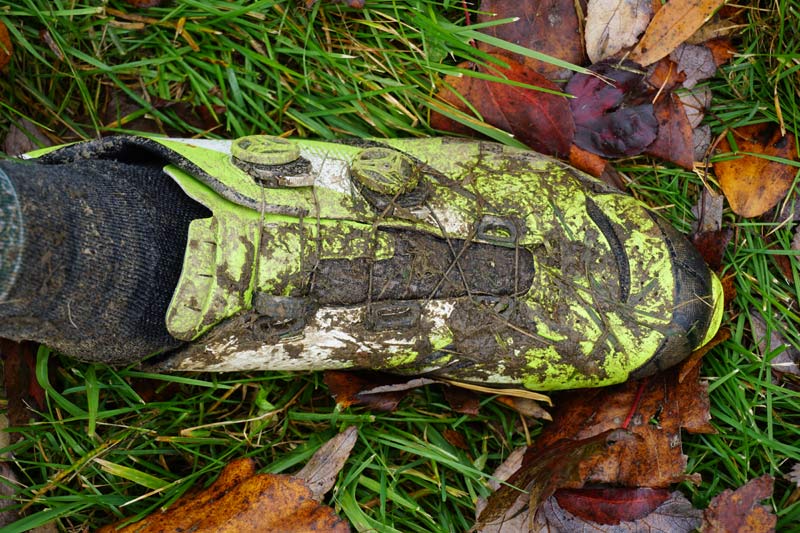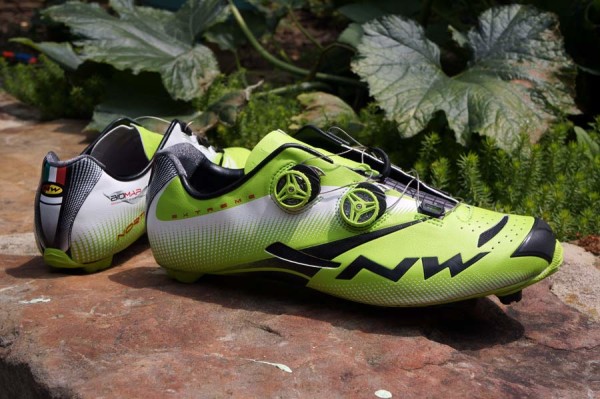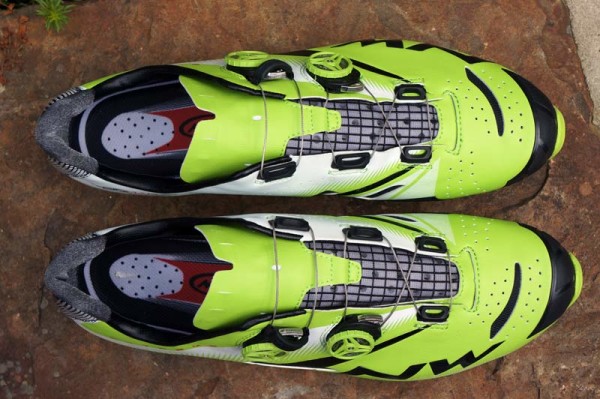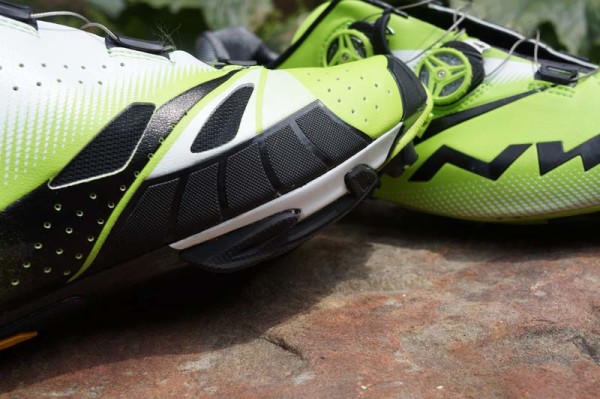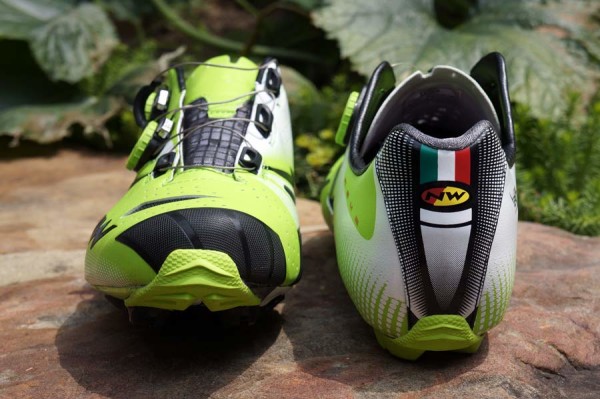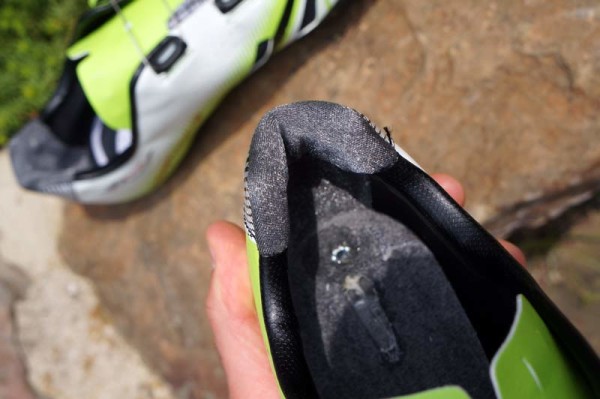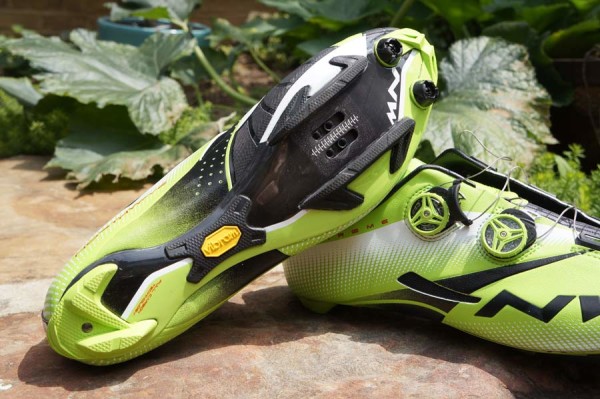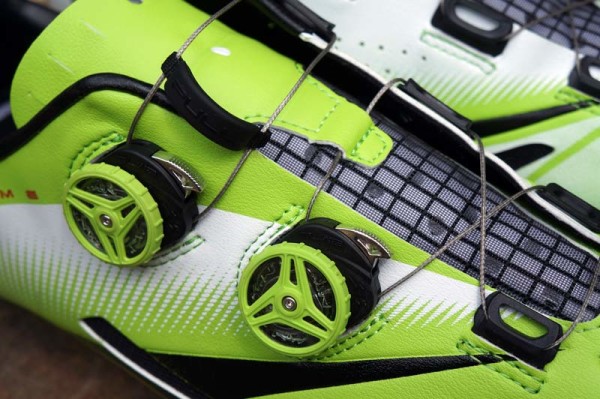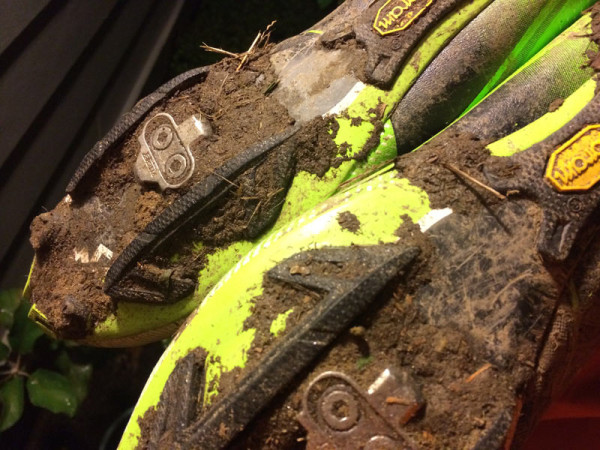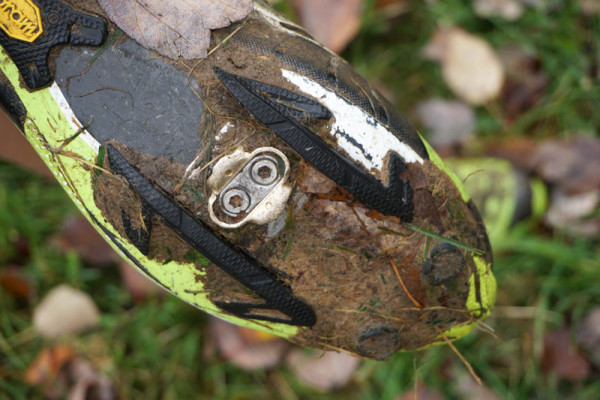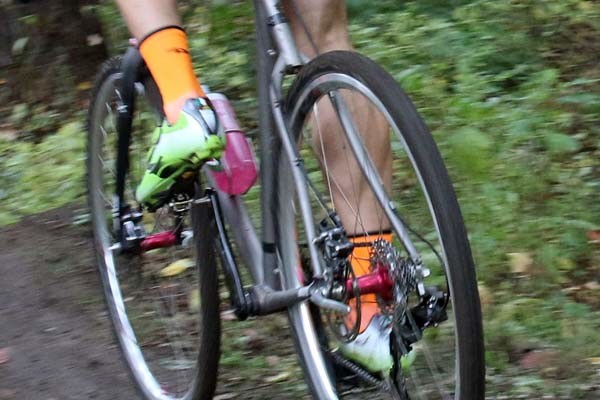A few years back, I tested the Northwave Extreme road bike shoes and liked them…still ride ’em, in fact. So when the chance to test their lightweight, racy Extreme XC shoes came up, I stepped up. Like the road shoes, the 2014 model (tested…long term review, here) came in a really bright color alongside the standard black. For 2015, the green carries over and they added a sweet angular gray urban camo with bright orange highlights. The Extreme XC model also gained a Velcro strap near the toe and a partnership with Michelin to develop grippier outsole traction pads. Otherwise, the shoes are similar in materials and design, enough so that this review bodes well for the current version, too…
The uppers are a lightweight microfiber. The test models had larger perforations across the toe, the 2015 model gets small pinhole perfs across the sides instead. Both have the small mesh vent on top of the toes.
Despite the narrow Italian look, the shoes are comfortable without constricting the foot. They’re snug, like a racing shoe should be, but not uncomfortably so. A few small mesh vents on the toe and instep combine with a perforated foam tongue to help the feet breathe. During the summer, they never felt hot, probably helped by the light color and thin upper material. In winter, they’re good with thin wool socks to a point, after which there’s not much room inside them for thicker socks so it’s best to switch to a dedicated winter shoe.
Scuff guards on the toe and bottom instep help protect high abrasion areas. They’re thermowelded to the upper, creating a seamless one-piece upper.
The heel cup has a reinforced shape inside the bottom 2/3, then sits high on the achilles tendon with a non-slip fabric to keep your foot firmly planted inside the shoe.
In more than a year of riding, I’ve never had my feet feel like they were going to lift out.
One of the key features unique to their Extreme mountain bike shoes is the narrow, minimalist carbon sole. For 2014 they used Vibram rubber pads in the center section, which saves you when you can’t quite get clipped in and need some traction on the pedals. It also adds a bit of purchase when hiking unrideable sections. For 2015, they switched to a special rubber from Michelin.
Even with a very stiff sole, these shoes are decently walkable, and they run great over barriers and up steep hills for cyclocross.
Both model years use a dual ratchet with a release lever. The ratcheting is smooth, even when covered with mud, but the release lever leaves a lot to be desired. Often, I’d have to tighten them a click while holding then pulling the lever, fiddle with it a bit, and then simultaneously pull the cable out while jiggling it. I didn’t have the same issue with this system on the road shoes, so it’s likely just gummed up, but it does mean it takes an extra 20-30 seconds to get the shoes off. To its credit, the system does keep the foot secure and never accidentally loosened.
Speaking of gumming up, the continuous strip of tread adjacent to the cleats provides a big area for mud to collect. It didn’t seem to prevent cleat/pedal engagement, but it does mean more rotating mass on each pedal stroke.
The upside is that the tread strips also provide a small platform to rest on the pedals, which helps with minimalist pedals like the Ritchey WCS (cleats shown above) and Crank Brothers Eggbeaters (below).
Tow spike mounts come standard, which I should probably install for ‘cross, but the shoes seem to do fine without them.
Actual weight for size 47EU (~13US) is 645g for the pair. These came with two sets of insoles, but the 2015 models get a single, newer Extreme Air Evo footbed that gains a little arch support.
Long term, these things have held up very well through more than a year of wet, dry, hot and cold riding on mountain bikes and cyclocross bikes. They clean up easily, are light and surprisingly comfortable…and not just for a race shoe. They’re comfortable compared to any of my cycling shoes. Northwave’s BioMap design claims to put your foot in a powerful position for efficient pedaling, and it seems to work well without causing the fatigue some too-stiff shoes can. They’re stiff, but they don’t beat up my feet. And the carbon sole and treads have held up exceptionally well to the abuse mountain bike shoes usually see.
